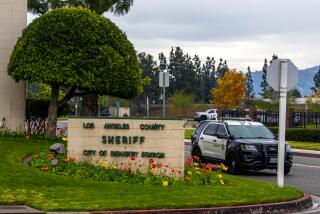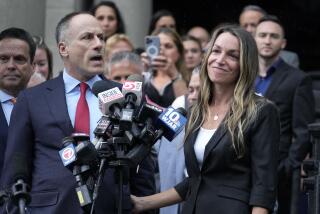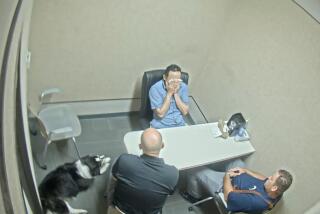Last Evidence Presented in Peyer Retrial : Closing Arguments Expected Today; Jury to Tackle Testimony, Exhibits
- Share via
Attorneys in the retrial of former California Highway Patrol Officer Craig Peyer concluded their presentation of evidence Monday, setting the stage for closing arguments this morning.
After the final arguments, the six-man, six-woman jury will begin examining piles of exhibits and reviewing the testimony of scores of witnesses to reach a verdict in the celebrated murder case.
In Peyer’s first trial, jurors deliberated for seven days before announcing Feb. 25 that they were deadlocked, 7 to 5, in favor of conviction. A mistrial was then declared by Superior Court Judge Richard Huffman.
A Change of Prosecutor
Dist. Atty. Edwin Miller later announced that a new prosecutor, Deputy Dist. Atty. Paul Pfingst, would retry the case against the patrolman.
Peyer, 38, is charged with the murder of Cara Knott, a 20-year-old San Diego State University student whose body was found Dec. 28, 1986--the morning after she disappeared while driving to her El Cajon home along Interstate 15.
Prosecutors claim that Peyer stopped Knott’s Volkswagen Beetle while on duty along I-15, strangled her and threw her body from an abandoned highway bridge near the freeway’s Mercy Road exit south of Escondido.
A 13-year CHP veteran until he was fired last year, Peyer has been free on bail since March 4, 1987. The Knott family and Peyer’s wife and parents have been in the courtroom throughout both trials and the officer’s preliminary hearing.
On Monday, the evidence part of the 19-day retrial came quietly to a close with three rebuttal witnesses whose testimony was used by each attorney in hopes of scoring final points with the jury.
Pfingst called San Diego Police Detective William Nulton in an attempt to cast further aspersions on a defense witness who said she saw a young blonde with three other people in a Volkswagen the night Knott disappeared. Susan Lambert, who was not a witness in the first trial, testified that she was driving home on I-15 the night of Dec. 27, 1986, when she saw the Volkswagen head for the Mercy Road off-ramp.
Nulton testified Monday that Lambert’s mother, Lillian, told him during an interview that her daughter said she might have dreamed the episode. But, when Lillian Lambert testified last week, she said she had asked Susan whether it might have been a dream and that her daughter insisted it wasn’t.
Defense attorney Robert Grimes used his final witness to highlight defense arguments that pathologists botched the Knott murder investigation, hindering an approximation of her time of death. Grimes has argued that, had a liver temperature been taken at the crime scene, the time of the killing could have been determined. That knowledge, he has suggested, would have exonerated Peyer.
On Monday, a former San Diego County deputy coroner said a liver temperature combined with information about ambient temperature, the amount of clothing a victim is wearing and other data enable an astute pathologist to estimate the time of death within one hour. Dr. Hormez Guard, in testimony that conflicts dramatically with that of pathologists testifying for the prosecution, said a liver temperature can be fruitful even if taken as many as 36 hours after death.
During a spirited and testy cross-examination by Pfingst, however, Guard conceded that major variations in air temperature make the liver-reading method unreliable. When the ambient temperature is constantly changing, it accelerates the loss of body heat at a rate that cannot be gauged.
Asked whether a variation of more than 10 degrees would make the procedure “useless,” Guard replied yes. The difference in temperature between when Knott disappeared and when her body was found the next morning was 30 degrees.
More to Read
Sign up for Essential California
The most important California stories and recommendations in your inbox every morning.
You may occasionally receive promotional content from the Los Angeles Times.













